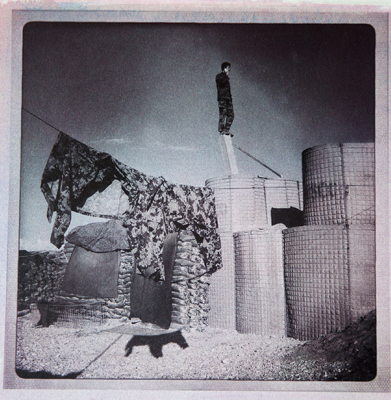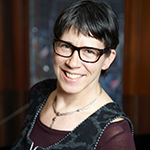
Contemporary artists reflect on the medium of photography itself and how technology impacts communication in the digital age.
Presenters: Rita Leistner Penelope Umbrico
Moderators: Fred Ritchin
Location: Brooklyn Bridge Park – Emily Warren Roebling Plaza
Number 1 on the official photoville map
Contemporary artists reflect on the medium of photography itself and how technology impacts communication in the digital age.

Award-winning photographer, writer, and educator Rita Leistner’s varied career has taken her from academia to war and back again, intersecting the genres of art, photojournalism, and literary criticism. She is a graduate of the International Center of Photography in New York and has a Master of Arts degree in comparative literature from the University of Toronto where she teaches the history of photojournalism and documentary photography.
Her recent book, Looking for Marshall McLuhan in Afghanistan, was shortlisted for the 2015 Marshall McLuhan Award for Outstanding Book in the Field of Media Ecology. She is co-author of several other books including Unembedded: Four Independent Photojournalists on the War in Iraq and The Edward Curtis Project: A Modern Picture Story.
Her photography has been exhibited and published internationally and her articles, essays, and reviews have appeared in numerous magazines and books. Rita Leistner is represented by the Stephen Bulger Gallery. She has also planted over a million trees in Canada.

Penelope Umbrico is a photo-based artist whose installations, video, and digital media works explore the ever-increasing production and consumption of images on the Internet. Utilizing photo-sharing and consumer websites as an expansive archive, she navigates between producer and consumer, local and global, and the individual and the collective, with attention to the technologies that produce (and are produced by) these forces. Her work questions the idea of the democratization of media, where pre-scripted images, made with tools programmed to function in predetermined ways, stake a claim to authorship, subjectivity and individuality. She views all the images within this emergent environment as evidence of something other than what they depict.
Her work is exhibited internationally and is in the permanent collections of the Guggenheim Museum; Los Angeles County Museum of Art; Metropolitan Museum of Art, NY; Museum of Modern Art, NY; Museum of Contemporary Art San Diego; Perez Art Museum Miami, San Francisco Museum of Modern Art, among others. She is the recipient of numerous awards including a recent Guggenheim Fellowship, and a Smithsonian Artist Research Fellowship. Aperture published her monograph, (photographs) (2011) and Range (2014) and Out of Order (2014) was published by RVB Paris. She is represented by Mark Moore Gallery, Culver City.

Fred Ritchin is Dean of the School at ICP (International Center of Photography) which serves more than 5,000 students each year in graduate, certificate, continuing education, and youth photography programs. Ritchin was also the founding director of the Documentary Photography and Photojournalism Program at the School of ICP and was appointed Dean in 2014.
Prior to joining ICP, Fred Ritchin was professor of Photography and Imaging at New York University’s Tisch School of the Arts, and co-director of the NYU/Magnum Foundation Photography and Human Rights educational program. Previously the picture editor of The New York Times Magazine (1978–82), executive editor of Camera Arts magazine (1982–83), and founding director of the Photojournalism and Documentary Photography Program at the International Center of Photography (1983–86), Ritchin has written and lectured internationally about the challenges and possibilities implicit in the digital revolution.